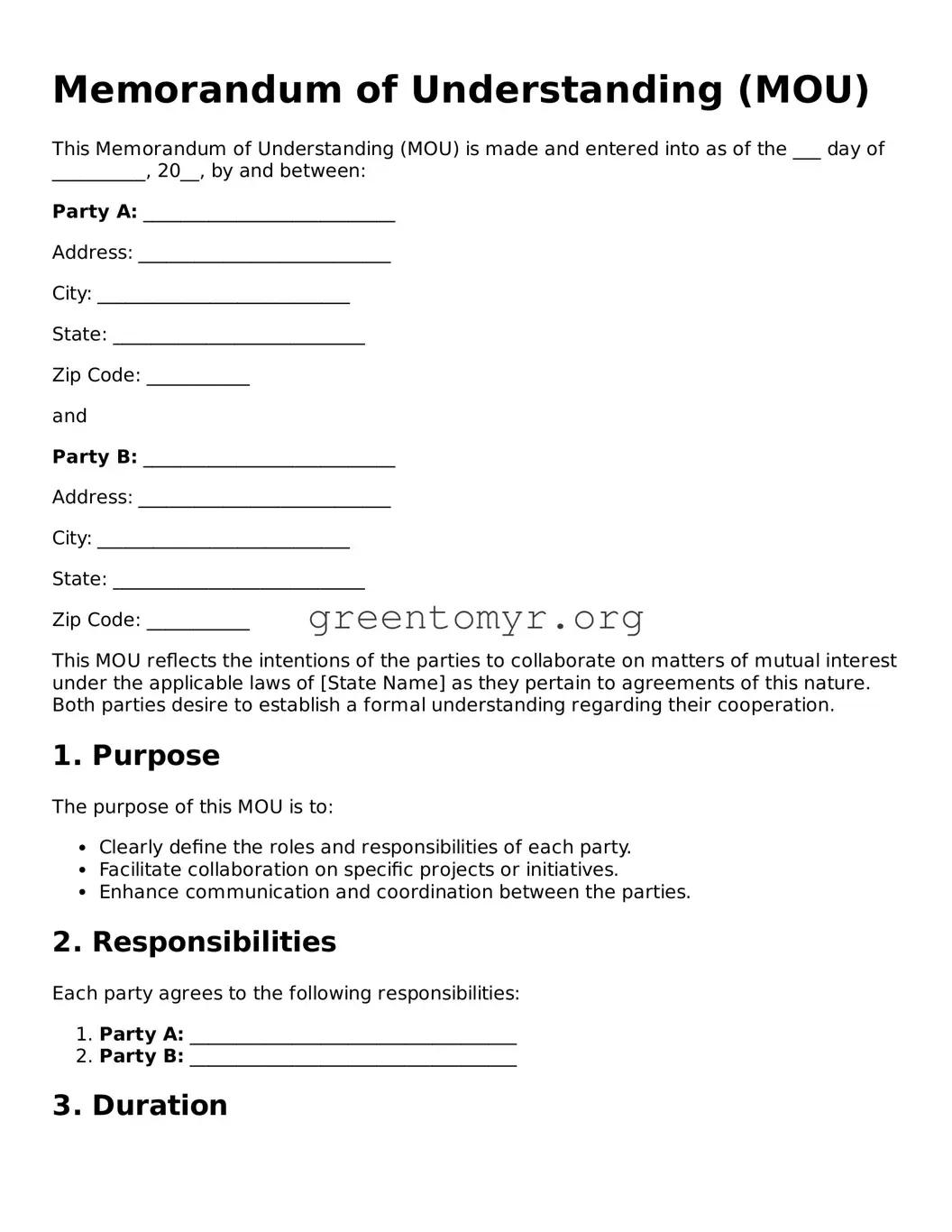Memorandum of Understanding (MOU)
This Memorandum of Understanding (MOU) is made and entered into as of the ___ day of __________, 20__, by and between:
Party A: ___________________________
Address: ___________________________
City: ___________________________
State: ___________________________
Zip Code: ___________
and
Party B: ___________________________
Address: ___________________________
City: ___________________________
State: ___________________________
Zip Code: ___________
This MOU reflects the intentions of the parties to collaborate on matters of mutual interest under the applicable laws of [State Name] as they pertain to agreements of this nature. Both parties desire to establish a formal understanding regarding their cooperation.
1. Purpose
The purpose of this MOU is to:
- Clearly define the roles and responsibilities of each party.
- Facilitate collaboration on specific projects or initiatives.
- Enhance communication and coordination between the parties.
2. Responsibilities
Each party agrees to the following responsibilities:
- Party A: ___________________________________
- Party B: ___________________________________
3. Duration
This MOU will remain in effect from the date of signing until the ___ day of __________, 20__ unless terminated earlier by either party with written notice.
4. Modification
This MOU may only be modified by a written agreement signed by both parties.
5. Governing Law
This MOU shall be governed by and construed in accordance with the laws of [State Name].
6. Signatures
By signing below, the parties agree to the terms outlined in this Memorandum of Understanding.
Party A Signature: ___________________________
Date: _______________
Party B Signature: ___________________________
Date: _______________
This document serves as a foundation for open dialogue and mutual understanding. It is intended to guide the parties in their cooperative efforts.
